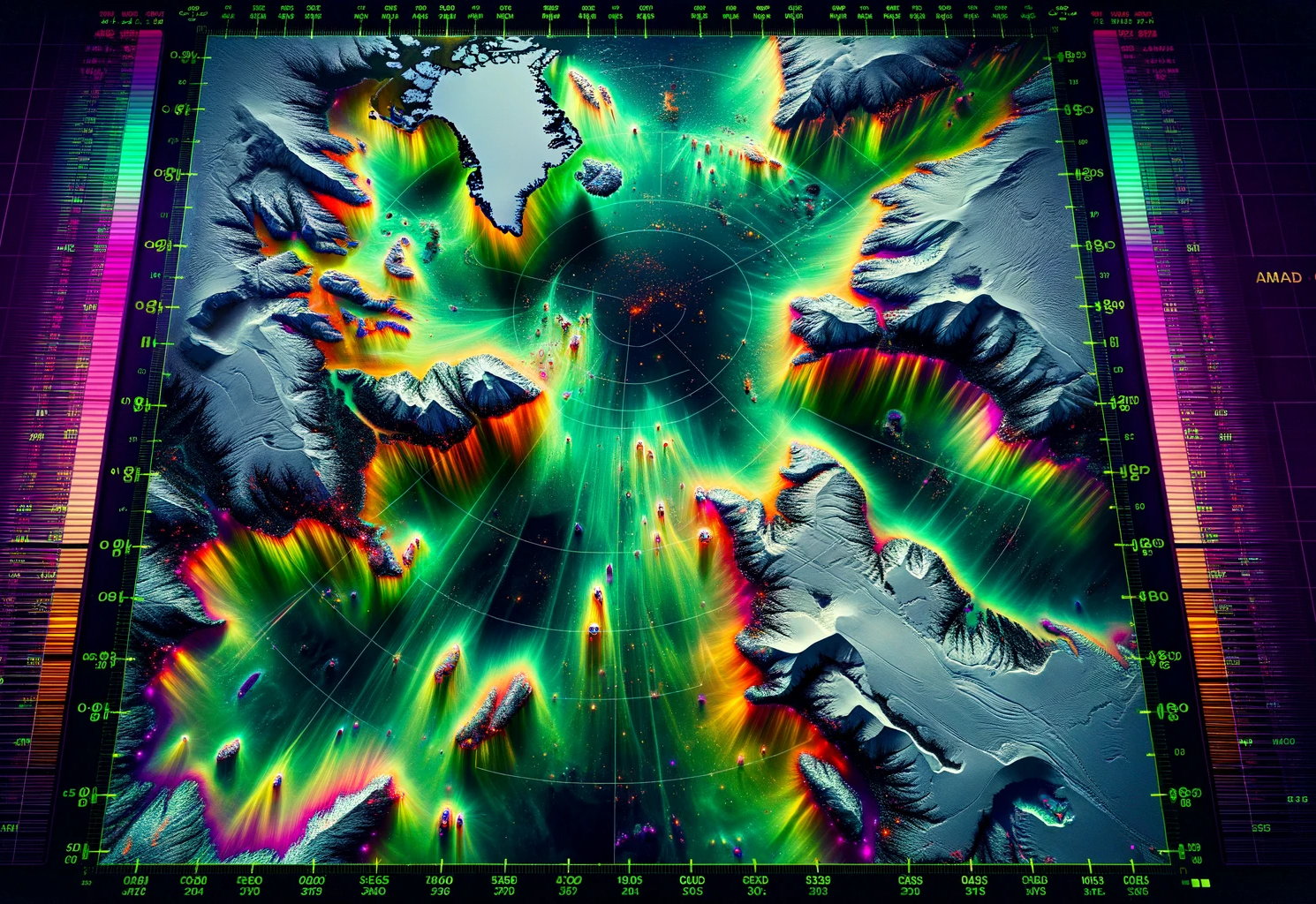In an article published in the journal Remote Sensing, researchers investigated the effectiveness of the rotating fan beam scatterometer for polar sea ice detection by developing and employing a Bayesian approach. The results signified the potency of rotating fan beam scatterometers for polar tracking.
 Study: Polar Sea Ice Detection Using Rotating Fan Beam Scatterometers. Image credit: Generated using DALL.E.3
Study: Polar Sea Ice Detection Using Rotating Fan Beam Scatterometers. Image credit: Generated using DALL.E.3
Background
Sea ice is pivotal in global climate models and is essential for accurate ocean surface wind data retrieval. Given that the polar regions are predominantly characterized by the presence of sea ice and open water, conducting a thorough analysis of polar sea ice properties is crucial. Satellite scatterometers have proven invaluable for monitoring these regions, thanks to their swift coverage, relatively high spatial resolution, and minimal sensitivity to atmospheric conditions. These active microwave systems are extensively used for ocean-related applications, including sea ice monitoring. However, due to their distinct scattering mechanisms, distinguishing between sea ice and open water backscatter signals has been a persistent challenge.
In recent years, rotating fan beam scatterometers like the China France Oceanography Satellite scatterometer (CSCAT) have emerged, offering a more diverse range of azimuth sampling and incidence angles. This innovative technology provides an opportunity to significantly improve sea ice monitoring in polar regions, contributing to the development of long-term records and advancing our understanding of these critical areas. The researchers of the present study explored the CSCAT using a Bayesian approach that considers CSCAT’s geometric characteristics to effectively detect polar sea ice.
About the study
CSCAT is a pivotal instrument operating at Ku-band frequency. It utilizes vertically and horizontally polarized fan beams to scan a substantial 1000 km swath of the Earth's surface. This advanced system uses a conical scanning mechanism to capture data at intermediate incidence angles. CSCAT efficiently generates 40 slices with a fine 10 km range resolution, providing a wealth of backscatter data for analysis. Its scientific data products include L1B data, encompassing σ0 slices and geolocations, L2A data with average backscatter values, and L2B data, which contains crucial sea surface wind information. This data is particularly significant for the sea ice detection process.
The sea ice detection algorithm for CSCAT was built on a robust Bayesian framework. This sophisticated method leverages dual polarizations and the multiple incidence angles of CSCAT for precise sea ice detection. The algorithm's workflow includes defining the CSCAT backscatter space, estimating the sea ice Geophysical Model Function (GMF), and calculating Bayesian posterior probabilities. The GMF for sea ice is established using CSCAT data, taking into account seasonal and regional variations. The algorithm narrows down the incidence angle range to 30°–49°, a selection grounded in stability and the representation of sea ice characteristics.
Furthermore, the sea ice detection algorithm involves a meticulous examination of backscatter distances. It employed Gaussian fitting to model these distances and assessed probability distribution functions. The Minimum Square Distance (MLE) between observed backscatters and the sea ice GMF is calculated, introducing a chi-square distribution with varying degrees of freedom based on the number of measurement pairs (N). Ultimately, the Bayesian algorithm yields posterior probabilities for sea ice detection, integrating MLE and an array of probabilities to effectively identify sea ice within CSCAT data. This sequential and comprehensive approach ensures the accurate detection of sea ice with CSCAT, delivering valuable insights into polar regions.
Study Results
The sea ice detection algorithm was diligently applied to create sea ice masks and posterior probability maps daily for the entire CSCAT mission duration from 2019 to 2022. To authenticate the accuracy of these sea ice detection results of CSCAT, a quantitative evaluation was conducted by comparing them with the microwave sea ice concentration database. In this regard, the Bayesian posterior probabilities derived from CSCAT data were projected onto Polar Stereographic Projection maps. By setting a threshold at 55%, the sea ice mask was distinctly defined, distinguishing sea ice from open water.
The validation process primarily relied on two reference datasets: the National Oceanic and Atmospheric Administration/National Snow and Ice Data Center (NOAA/NIDC) and the European Meteorological Satellite (EUMETSAT) OSI SAF SSMIS sea ice concentration data. Through rigorous analysis, it was ascertained that CSCAT sea ice edges align remarkably well with those from AMSR2, particularly when a sea ice concentration of 15% was applied. Quantitative assessments of sea ice extent consistently revealed a close agreement between CSCAT and NSIDC AMSR2 in both the Northern and Southern Hemispheres, validating the efficacy of CSCAT's sea ice detection algorithm. The overall standard deviation difference between these datasets was less than 0.3 million square kilometers, indicating robust alignment.
Conclusion
To sum up, the researchers explored the capabilities of the first spaceborne Ku-band rotating fan beam scatterometer, CSCAT, for polar sea ice detection. A Bayesian approach incorporating multiple incidence angles and dual polarization characteristics of CSCAT was developed. The algorithm successfully produced daily sea ice posterior probabilities and masks throughout the mission period (2019–2022).
Validation against reference datasets, including NSIDC AMSR2 and OSI SAF SSMIS and AMSR2, demonstrated the accuracy of CSCAT sea ice detection. The results revealed excellent agreement between CSCAT and NSIDC AMSR2 sea ice edges and consistently low differences in sea ice extents. This research thus confirmed the effectiveness of rotating fan beam scatterometers for polar sea ice monitoring.